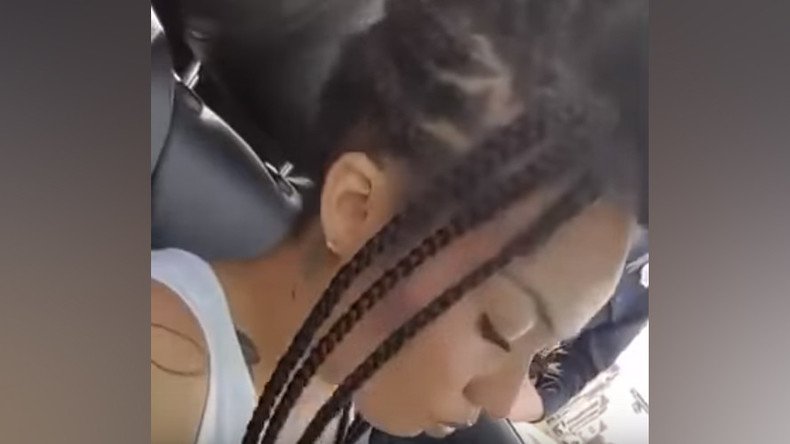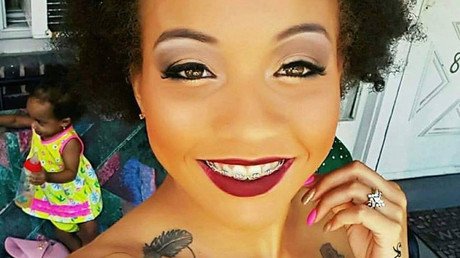Korryn Gaines’ family sues Baltimore for deadly confrontation

The family of Korryn Gaines has announced plans to sue Baltimore County in relation to a standoff between officers and Gaines, 23. Gaines was shot in a confrontation with police where the details remain murky at best and are disputed by eye witnesses.
The family of Korryn Gaines sent a notice of intent to sue to Baltimore County and the police officer who killed her, known only as Officer First Class Ruby. J. Wyndal Gordon, attorney for the Gaines family, explained at a press conference that Gaines had been shot as the result of frustration and not necessity, making her killing illegal according to the letter of intent.
The family is suing for $2 million from the county and $2 million from Officer Ruby.
Korryn Gaines’ death did not receive the attention that other black people killed by the police did, possibly due to the bizarre actions she was reported to have taken that led to her death.
According to the Baltimore County Police Department (BCPD), she barricaded herself in her home and used her child as a shield while pointing a gun at police officers while threatening to shoot.
While the BCPD has always maintained that they began exchanging fire after a BCPD officer fired on Gaines first, the lawsuit from the Gaines family claims that her neighbor’s experience paints a very different picture that the BCPD has tried to downplay.
Her neighbor, Ramone Coleman, told press on Monday that he had heard Gaines offer to surrender if the police lowered their guns, but they refused. In addition, he also claims to have heard an exchange from an officer that casts a shadow of doubt onto the necessity of shooting Gaines.
The BCPD claimed that officers originally went to Gaines’ home to serve her and her boyfriend arrest warrants after Gaines did not show up in court for a traffic related misdemeanor charge. Her boyfriend, Kareem Kiean Courtney, was to be arrested for drug- and weapon-related offenses.
This is not debated by the lawsuit. What is debated is why police was looking for Courtney in Gaines’ home when his “address and driver’s license shows that he lives in Baltimore City and has never lived with Korryn in Baltimore County,” the notice reads.
They go on to explain that police had little motivation to then go and get a key from the landlord when Korryn’s apartment “is right across the street from the Baltimore County Police Department” according to the notice of intent. Although the BCPD had arrest warrants for Gaines and Courtney, they did not have a search warrant nor did they have justifiable reason to insist on confronting Gaines at that moment according to the Gaines’ family lawyer.
The notice reads, “The Baltimore County Police Department did not say officers believed that forcible entry was necessary to apprehend an armed individual suspected of committing a violent felony offense,” nor did they “say officers believed that forcible entry was necessary to [sic] because they feared that that [sic] the occupants would destroy evidence.”
After police unlocked Gaines’ apartment, they claim that the door was secured with a chain but they could see Gaines sitting on the floor with a shotgun and her 5-year-old son nearby. This is where her neighbor, Ramone Coleman comes in.
Police commandeered his apartment where Coleman was staying with his 1-year-old daughter. Coleman explained in a press conference that he was not allowed to leave.
The notice reads, “In order to execute the arrest warrant for failing to appear in court for traffic violations and misdemeanors on Korryn, the special forces from the tactical unit drilled holes in Colman’s [sic] living room, bedroom and bathroom walls to monitor the movements of his next door neighbor.”
This is what allowed Coleman to be able to hear what was happening in Korryn’s apartment while he was stuck in his.
"She said, 'Put your guns down and I'll put mine down and come out,'" Coleman said, "They said no. And they said they were not leaving."
He claimed that police had swarmed the area.
"They were at every single window," he said. "Every exit, every window."
Coleman also claims that multiple members of Gaines’ family approached police and offered to help de-escalate the situation, but were turned down. Coleman claims that police grew frustrated that they couldn’t leave until Gaines surrendered, but she refused to drop her gun and leave the apartment.
Coleman claims the last thing he heard, due to police and Gaines exchanging fire, was an officer saying, “I’m sick of this s***.” Gaines family lawyer Jimmy A. Bell claims that this implies that police opened fire out of frustration and not in self-defense.
This actual moment is debated by police. Officer Ruby claimed that Gaines had threatened him and pointed her gun at him before he opened fire; he also stated that she returned fire before being shot. Gaines had been communicating with the outside world while she was streaming the encounter on Facebook Live. However, police requested that Facebook deactivate her account, claiming that her followers were encouraging her to prolong the standoff.
But attorneys for her family see that as an attempt to silence Gaines, and it prevented the one unbiased view into the apartment from being seen.
"By blocking her live streaming, the Baltimore County Police Department not only suppressed [her] speech under the Maryland Constitution but also stopped the only independent visual video record of what was taking place before Officer Ruby killed her," Bell wrote in the letter.
Gaines was not the first person to be killed by Officer Ruby. In 2007, he was one of two tactical officers who shot a suicidal 24-year-old suffering from bipolar disorder. Adam Rothstein had allegedly been visited by police about 20 times in his life without incident, the Baltimore Police reported. While he had been arrested on drug related charges, nothing on his record indicated that he had a history of violence.
But in 2007, he allegedly claimed that he had guns and knives and threatened suicide. The responding officers opened fire when he pointed what turned out to be a BB gun at them.
Gaines also had her own issues. It was claimed that she suffered from lead poisoning. The BCPD admitted they did not use a crisis intervention team that, according to their website, works with “suicidal subjects, mentally ill subjects, situational crisis, emergency petitions and other acute situations.”
Why this team was never called in remains unknown.
The investigation into Gaines’ death is still ongoing, but the family’s attorneys defended that choice, saying, "If we trusted the government and the police department to conduct a proper investigation, then we would've waited.”
The Gaines family hopes that their lawsuit can answer some of these questions and better understand what happened on August 1.
"The only way we're going to learn them is by filing a lawsuit and conducting depositions," attorney J. Wyndal Gordon told the Baltimore Sun.















